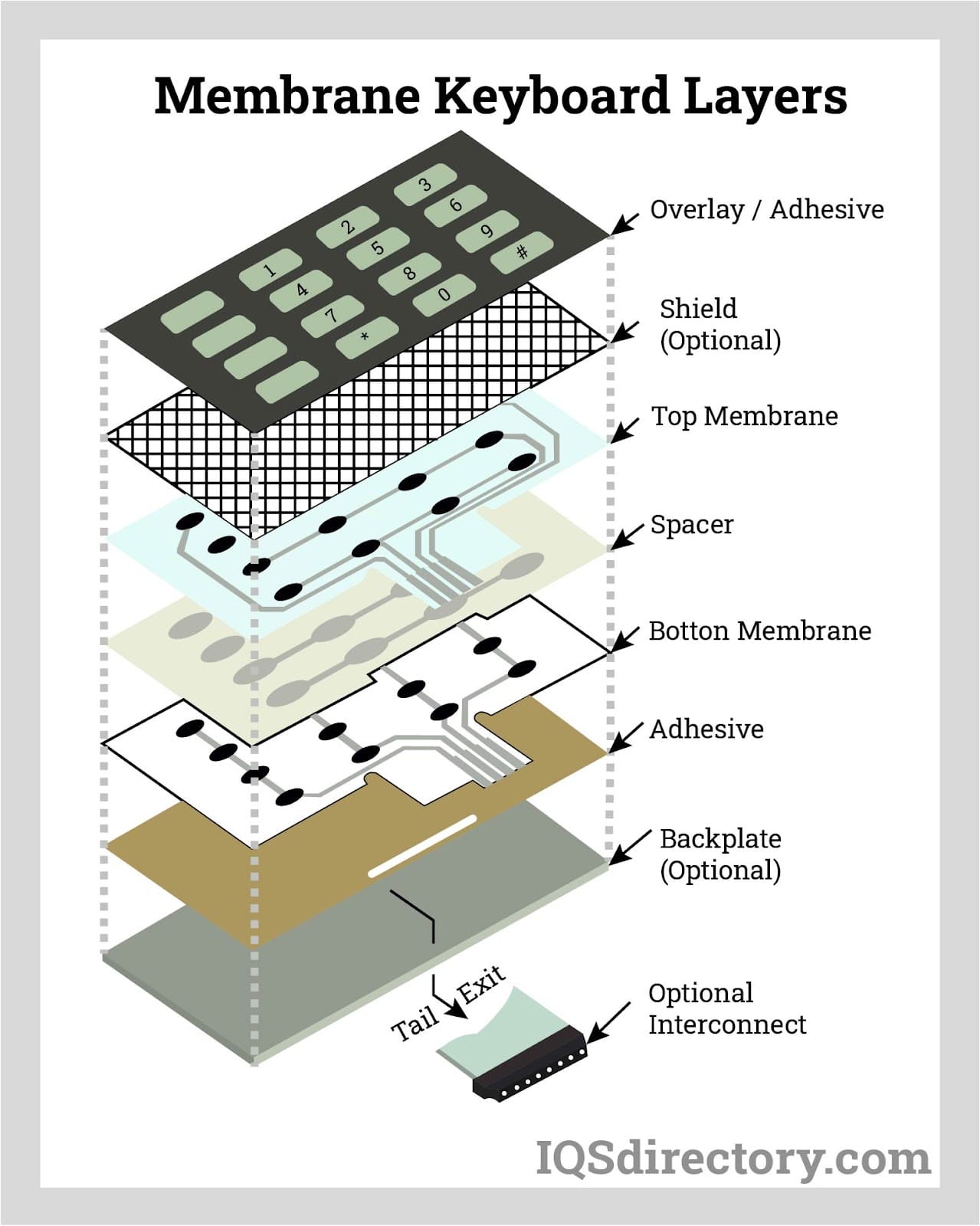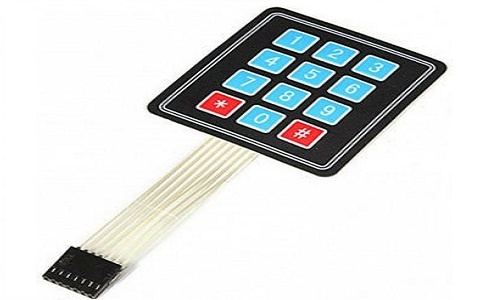The Production Process Behind Membrane Switch Over: What You Need to Know
The production process behind membrane layer changes combines mindful style, product choice, and quality assurance. It starts with understanding the details of membrane button design and proceeds through numerous stages, consisting of material options and printing techniques. Each phase plays an important duty in guaranteeing capability and sturdiness. Nonetheless, the complexities of layer building and construction and the rigorous testing criteria might disclose understandings that are not promptly apparent. What exists past these foundational aspects?
Recognizing Membrane Layer Switch Style
Although membrane layer buttons may appear straightforward initially glance, their style includes detailed considerations that guarantee functionality and sturdiness. The design process begins with a detailed understanding of individual needs, consisting of the user interface's desired application and ecological aspects. Comfort designs is a key component, as the format has to promote convenience of usage while making sure that responsive comments satisfies individual expectations.Moreover, the layering of elements, such as graphic overlays, adhesive layers, and conductive traces, must be precisely crafted. membrane switch. This split setup not only influences the button's responsiveness yet likewise affects its longevity. Focus is provided to the securing methods utilized to protect versus wetness and dust, which could endanger performance. Additionally, design considerations reach aesthetics, where color design and visual quality improve customer experience. Inevitably, the style of membrane switches over balances capability, individual experience, and sturdiness, ensuring that they fulfill the needs of various applications properly
Materials Made Use Of in Membrane Switch Over Production
When selecting products for membrane button manufacturing, it is important to ponder both performance and longevity. The main products include polyester and polycarbonate films, which offer adaptability and stamina. These movies are typically covered with glue to ensure proper bonding to substrates. Conductive inks, commonly composed of silver or carbon, are essential for producing electric links within the switch, allowing for trustworthy operation.Additionally, a safety layer, such as a hard layer, is regularly applied to improve scrape resistance and long life. The selection of backing material, such as acrylic or foam, can substantially affect the switch's responsive feel and total user experience. Additionally, numerous environmental elements, consisting of temperature level and humidity, need to guide product selection to ensure peak efficiency in details applications. Ultimately, the best combination of materials adds to the membrane layer button's capability and lifespan, making notified options crucial for manufacturers.
The Printing Process: Creating Video and Text
The printing procedure in membrane layer button manufacturing plays a considerable function in creating top notch graphics and message. Numerous visuals layout strategies are employed to ensure aesthetic charm and performance, while careful ink selection methods are important for resilience and performance. Comprehending these elements is fundamental for achieving ideal cause membrane layer switch design.
Graphic Design Techniques
Graphic layout methods play a vital role in the printing procedure of membrane buttons, as they define just how graphics and text will ultimately show up on the end product. Efficient graphic style involves the tactical usage of layouts, colors, and font styles to improve readability and aesthetic charm. Developers commonly utilize vector graphics for scalability, guaranteeing that pictures continue to be sharp at various dimensions. Additionally, focus to comparison and alignment is crucial, as it affects individual interaction and aesthetic quality. The incorporation of branding aspects, such as logo designs, have to be managed with like preserve brand honesty. In general, thoughtful visuals design strategies add substantially to the performance and attractiveness of membrane layer buttons, influencing user experience and item performance.
Ink Option Methods
Picking the suitable ink is essential for accomplishing the desired aesthetic top quality and resilience in membrane switch production. Numerous ink types are made use of, including solvent-based, water-based, and UV-curable inks. Each kind provides distinct features, such as resistance, flexibility, and attachment to ecological elements. Solvent-based inks are commonly preferred for their sturdiness and lively shades, while water-based inks are more eco pleasant yet may have constraints in bond. UV-curable inks supply fast curing and durable performance. Furthermore, shade matching strategies guarantee that the selected inks straighten with layout requirements. Ultimately, the choice of ink have to think about variables such as application method, substratum compatibility, and end-use needs to accomplish remarkable results in membrane layer button graphics and my website text.
Layer Building And Construction and Assembly

Material Option Refine
A cautious choice of products is crucial in the production procedure of membrane switches, as it straight affects functionality and resilience. The main products utilized consist of polyester, polycarbonate, and different conductive inks. Polyester is frequently favored for its exceptional resistance to chemicals and check it out abrasion, making it suitable for severe environments. Polycarbonate, on the various other hand, gives exceptional clearness and effect resistance, which is beneficial for applications needing exposure and robustness. Conductive inks, normally composed of silver or carbon, are essential for producing reliable electric pathways. Additionally, the selection of sticky materials impacts the overall honesty of the switch - membrane switch. Evaluating aspects such as ecological direct exposure, tactile comments, and aesthetic needs overviews suppliers in selecting the most effective products for their details applications
Layer Attachment Strategies
Sticking layers in membrane layer switch building is an essential procedure that assures functionality and longevity. Different attachment strategies are utilized to secure excellent bonding in between layers, which typically consist of making use of adhesives, heat, and pressure. Pressure-sensitive adhesives (PSAs) are typically made use of for their convenience of application and instant bonding capacities. Additionally, thermal bonding techniques can be applied, where warm is used to activate sticky properties, securing a strong bond. The option of attachment approach largely depends on the materials included and the details application requirements of the membrane switch. Proper placement and consistent application of adhesives are vital to protect against problems, safeguarding the switch operates effectively throughout its designated lifespan.
Quality Control Measures
Guaranteeing quality assurance throughout the layer building and assembly of membrane buttons is crucial for preserving performance and integrity. This process generally entails numerous critical measures, including thorough assessments at each phase of production. Producers use sophisticated screening approaches, such as peel examinations and bond evaluations, to confirm the integrity of layer bonds. In addition, visual examinations are performed to determine any kind of defects in printing or product incongruities. Environmental conditions, such as temperature and moisture, are thoroughly kept track of to assure excellent curing and attachment. Normal calibration of tools aids preserve accurate manufacturing criteria. By executing these top quality control steps, manufacturers can significantly minimize the threat of item failing, ensuring that the final membrane switches over meet the required specifications and consumer expectations.
Testing and High Quality Control Actions

Innovations in Membrane Layer Change Innovation
As improvements in technology remain to progress, membrane layer switches are benefiting from cutting-edge developments that boost their functionality and customer experience. One significant technology is the combination of capacitive touch technology, which permits for even more receptive and user-friendly interface. This shift not only enhances looks yet also decreases mechanical wear and tear, extending the lifespan of the switches.Additionally, developments in visuals overlay materials have actually led to boosted resilience and resistance to environmental aspects such as dampness and UV light. These products currently supply improved quality and illumination, additional elevating the visual appeal.Furthermore, the unification of smart modern technology is changing membrane switches into interactive control board, allowing connectivity with IoT gadgets. This connectivity promotes a seamless individual experience, leading the way for applications in numerous markets, from healthcare to consumer electronic devices. Jointly, these innovations position membrane switches as important elements in modern-day gadget layout.
Regularly Asked Inquiries
For how long Does the Membrane Layer Change Manufacturing Refine Take?
The duration of the membrane button production process can vary considerably. Aspects such as complexity, materials used, and production quantity impact timelines, with typical production varying from a few days to numerous weeks for completion.
What Are the Typical Applications for Membrane Buttons?
Membrane layer buttons are generally made use of in numerous markets, consisting of auto controls, house devices, clinical devices, and consumer electronics (membrane switch). Their adaptability and resilience make them excellent for applications needing user-friendly user interfaces and dependable efficiency in varied environments
Can Membrane Switches Be Custom-made for Details Demands?

What Is the Lifespan of a Common Membrane Layer Switch?
The lifespan of a common membrane switch differs, however normally, it varies from 1 to 5 million cycles. Variables such as usage, environment, and worldly high quality significantly affect sturdiness and total performance gradually.

Are Membrane Layer Changes Eco-friendly?
The environmental kindness of membrane switches differs. Some materials utilized may not be recyclable, while others can be environmentally friendly. The total influence relies on manufacturing techniques and products, requiring careful factor to consider throughout option and disposal. The manufacturing process behind membrane layer changes combines careful design, product selection, and top quality control. It starts with understanding the complexities of membrane layer button layout and progresses via various stages, consisting of material options and printing methods. When choosing materials for membrane layer button manufacturing, it is essential to contemplate both efficiency and durability. A cautious choice of materials is necessary in the production procedure of membrane buttons, as it straight affects capability and longevity. The selection of attachment method greatly depends on the products entailed and the details application requirements of the membrane layer switch.
Comments on “The ultimate guide to using membrane switch in vehicle interfaces”